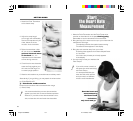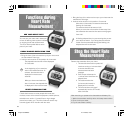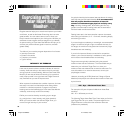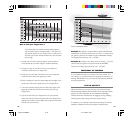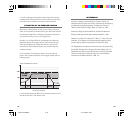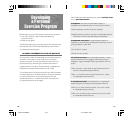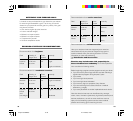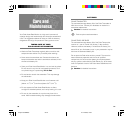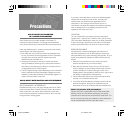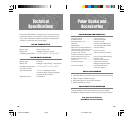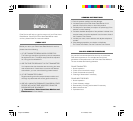
23
22
If you stay in close proximity to a source of electromagnetic
interference for longer than one minute, the heart rate
measurement may stop and time registration will be
interrupted. In this case go further from the source of
interference and restart the measurement. Before restarting,
note the elapsed time in the display, because the time
registration will restart from 0:00.
CROSSTALK
The non-coded Polar wrist receiver picks up transmitter
signals within 1 metre/3 feet. Therefore, when you are using
your Polar Heart Rate Monitor, make sure no other transmitter
is within that range. Signals from more than one transmitter
picked up simultaneously can cause an incorrect readout.
EXERCISE EQUIPMENT
Several pieces of exercise equipment with electronic or
electrical components such as LED displays, motors and
electrical brakes may cause interfering stray signals. To try to
tackle these problems, relocate the Polar wrist receiver as
follows:
1. Remove the transmitter from your chest and use the
exercise equipment as you would normally.
2. Move the wrist receiver around until you find an area in
which it displays no stray reading or flashing of the heart
symbol. Interference is often worst right in front of the
display panel of the equipment, while the left or right side of
the display is relatively free of disturbance.
3. Put the transmitter back on the chest and keep the wrist
receiver in this interference free area.
4. If the Polar Heart Rate Monitor still does not work with the
exercise equipment, that piece of equipment may be
electrically too noisy for wireless heart rate measurement.
Notice for persons with pacemakers
Persons who have a pacemaker use the Polar Heart Rate
Monitor at their own risk. Before starting use, we always
recommend an exercise test under doctor’s supervision. The
test is to ensure the safety and reliability of the simultaneous
use of the pacemaker and the heart rate monitor.
Precautions
POLAR HEART RATE MONITOR
IN A WATER ENVIRONMENT
Polar Tempo receiver is water resistant to 20 metres. To
maintain the water resistance, it is strongly recommended to
have all service done by an authorised Polar service personnel.
Heart rate measurement in a water environment is technically
demanding for the following reasons:
• Pool water with a high chlorine content and seawater may
be very conductive and the electrodes of Polar Transmitter
may get short circuited and ECG signals cannot be
detected by the transmitter unit.
• Jumping into the water or strenuous muscle movement
during competitive swimming may cause water resistance
that shifts the transmitter on the body to a location where it
is not possible to pick up ECG signal.
• The ECG signal strength varies depending on the individual’s
tissue composition and the percentage of people who have
problems in heart rate measuring is considerably higher in a
water environment than in other use.
POLAR HEART RATE MONITOR AND INTERFERENCE
ELECTROMAGNETIC INTERFERENCE
Disturbances may occur near high voltage power lines, traffic
lights, overhead lines of electric railways, electric bus lines or
trams, televisions, car motors, bike computers, some motor
driven exercise equipment, cellular phones or when you walk
through electric security gates.
Tempo man/GBR/C 27.12.2000, 14:5422-23



